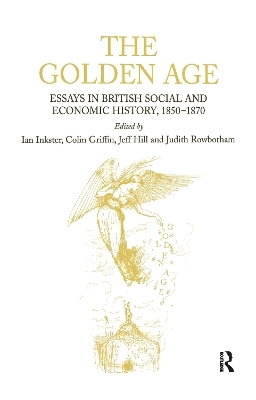
The Golden Age
Routledge (Verlag)
978-0-7546-0114-2 (ISBN)
- Titel z.Zt. nicht lieferbar
- Versandkostenfrei innerhalb Deutschlands
- Auch auf Rechnung
- Verfügbarkeit in der Filiale vor Ort prüfen
- Artikel merken
In 1850 the Industrial Revolution came to an end. In 1851 the Great Exhibition illustrated to the whole world the supremacy of industrial England. For the next twenty years Britain reigned supreme. From around 1870 Britain began to decline. Britain is now a second rate power with strong memories of its former supremacy. The above five sentences summarise a common view of the sequencing of Britain’s rise and relative fall, a stereotype that is challenged and modified in the essays of The Golden Age. By concentrating on central aspects of social and industrial change authors expose the underpinnings of supremacy, its unsung underside, its tarnished gold. Major themes cover industrial and technological change, social institutions and gender relations in a period during which industry and industrialism were equally celebrated and nurtured. Against this background it is difficult to argue for any sudden decline of energy, assets or institution, nor for any significant move from an industrial society to one in which a hearty manufacturing was replaced by commerce and land, sensibility and artifice.
Ian Inkster, Colin Griffin, Judith Rowbotham
Contents: Introduction; A lustrous age?, Ian Inkster; ’Nor all that glisters.....’: the not so Golden Age, Harold Perkin; Part One Industry: Introduction, Colin Griffin; Coalmining in mid-Victorian Britain: a Golden Age revisited?, Colin Griffin; A Golden Age of agriculture?, Stephen Caunce; The cotton industry in the 1850s and 1860s: decades of contrast, Geoff Timmins; The Golden Age of electricity, Gillian Cookson; Part Two Technology: Introduction, Ian Inkster; Michael Farraday and lighthouses, Frank A. J. L. James; Lies, damned lies and declinism: Lyon Playfair, the Paris 1867 Exhibition and contested rhetorics of scientific education and industrial performance, Graeme Gooday; Machinofacture and technical change: the patent evidence, Ian Inkster; Part Three Social Institutions: Introduction, Jeff Hill; ’Why should working men visit the Exhibition?’ - workers and the Great Exhibition and the ethos of industrialism, Su Barton; Estimating a public sphere: intellectual and technical associations at the time of the Great Exhibition, Vicky Brown and Ian Inkster; ’Golden Age’ and ’Better Days’: narratives of industrialism in the cotton trade of north-east Lancashire, 1860s to 1920s, Jeff Hill; Popular culture and the ’Golden Age’: the Church of England and hiring fairs in the East Riding of Yorkshire c. 1850-75, Gary Moses; In defence of respectability: financial crime, the ’High Art’ criminal and the language of the courtroom 1850-1880, Sarah Lowrie; Part four gender: Introduction, Judith Rowbotham; ’Physically a splendid race’ or ’hardened and brutalised by unsuitable toil’?: unravelling the position of women workers in rural England during the Golden Age of agriculture, Nicola Verdon; The respectability imperative: a golden rule in cases of sexual assault?, Kim Stevenson; Keep the ’whoam’ fires burning: domestic yearnings in Lancashire dialect poetry, Catriona M. Parratt; ’All our past proclaims our future’: popular biogra
| Verlagsort | London |
|---|---|
| Sprache | englisch |
| Maße | 156 x 234 mm |
| Gewicht | 453 g |
| Themenwelt | Geschichte ► Allgemeine Geschichte ► Neuzeit (bis 1918) |
| Geisteswissenschaften ► Geschichte ► Regional- / Ländergeschichte | |
| Geschichte ► Teilgebiete der Geschichte ► Kulturgeschichte | |
| Geschichte ► Teilgebiete der Geschichte ► Technikgeschichte | |
| Geschichte ► Teilgebiete der Geschichte ► Wirtschaftsgeschichte | |
| ISBN-10 | 0-7546-0114-5 / 0754601145 |
| ISBN-13 | 978-0-7546-0114-2 / 9780754601142 |
| Zustand | Neuware |
| Haben Sie eine Frage zum Produkt? |
aus dem Bereich


